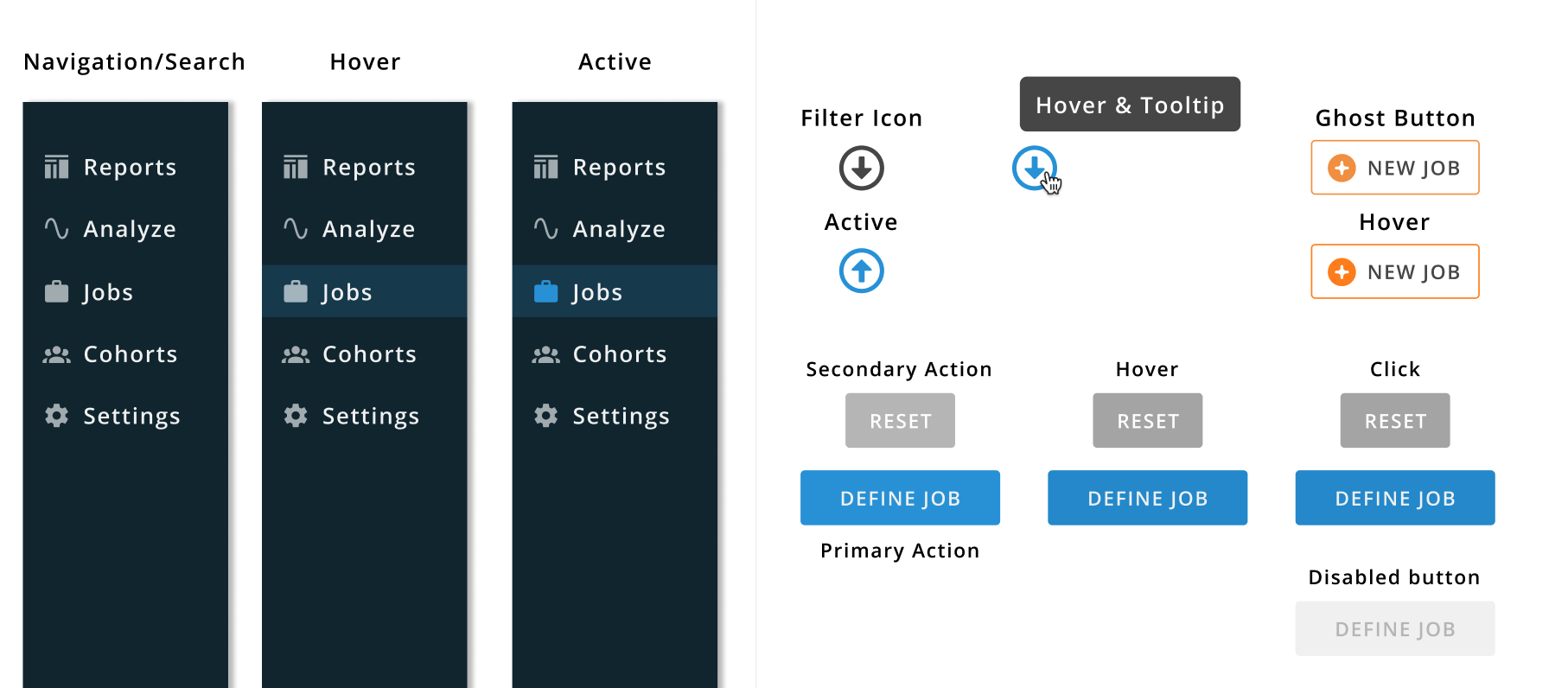Enterprise data teams were drowning in fragmented tools with zero visibility into their cloud warehouse performance. As the sole designer, I transformed complex cloud data warehouse operations into intuitive, actionable insights for teams managing billions of queries.
My role
End-to-end product design and user research
Design system creation and component library
Data visualization and enterprise workflow design
Results
89% increase in feature discovery
68% reduction in time to insight
45% decrease in training time

The Challenge
Enterprise data teams were drowning in fragmented tools with zero visibility into their cloud warehouse performance. I needed to create a solution that worked for both technical data engineers and business stakeholders.
No Real-Time Visibility
Teams couldn't see query performance or resource utilization in real-time, leading to reactive problem-solving.
Fragmented Workflows
Multiple disconnected tools created context switching and inefficient collaboration across teams.
Rising Costs
Without proper optimization insights, cloud computing costs were spiraling out of control.
Research Insights
Deep research revealed that teams needed a unified platform that could serve both technical data engineers and business stakeholders, with progressive disclosure of complexity based on user roles and context.
The Solution
I designed a unified analytics platform with adaptive complexity—sophisticated capabilities for data engineers, accessible insights for business users, all through progressive disclosure and context-aware navigation.
Comprehensive Design System

Material Design Foundation
Built upon Google's Material Design system to leverage established usability patterns while customizing components for data-heavy enterprise workflows. This provided immediate familiarity for users while ensuring accessibility compliance.
Custom Component Library
Developed specialized components for data visualization, filtering, and analytics workflows that weren't available in standard design systems. Each component included comprehensive state documentation and interaction specifications.
Scalable Architecture
Created a modular system that could grow with the platform's needs, including detailed specifications for navigation states, button variations, icon treatments, and interactive feedback patterns.
Developer Handoff
Provided comprehensive documentation with hover states, active states, disabled states, and interaction specifications that enabled seamless implementation by the engineering team.
Before & After: Interface Evolution

Complex interface with cluttered navigation and overwhelming information density

Streamlined design with clear hierarchy and focused information architecture
Advanced Filtering & Personalization
I designed a sophisticated filtering system that allows users to create complex, personalized reports with multiple conditions and logical operators, enabling precise data analysis across different warehouse sources.

Dynamic Filter Building
Users can build complex queries by combining multiple filter conditions with AND/OR logic, allowing for precise data segmentation across different warehouse sources like Redshift, Snowflake, and BigQuery.
Expandable Conditions
The interface supports unlimited filter additions with intuitive "Add Filter" buttons, enabling users to create increasingly sophisticated queries without overwhelming the interface.
Contextual Operations
Separate sections for job properties and table operations provide contextual filtering options, allowing users to focus on specific aspects of their data warehouse performance.
Key Design Decisions
Unified Dashboard Approach
Instead of separate interfaces for different user types, I designed a unified dashboard that adapts its complexity and focus based on user roles and current tasks. This reduces training overhead and enables better cross-team collaboration.
Context-Aware Navigation
Implemented a navigation system that maintains context across different views and workflows. Users can drill down into specific queries or workloads without losing their place in the broader analysis.
Progressive Disclosure
Designed layered information architecture that presents high-level insights first, with the ability to progressively reveal more detailed data and technical information as needed.
Comprehensive Workload Management
The final design integrates workload selection, job management, and real-time analytics into a cohesive interface that enables data teams to efficiently monitor and optimize their cloud warehouse operations.

Workload Organization
Intuitive sidebar navigation allows users to quickly switch between different workloads and maintain context across complex data warehouse environments.
Real-Time Analytics
Live query count visualization and trend analysis provide immediate insights into workload performance and resource utilization patterns.
Grouped Analysis
Smart query grouping with visual indicators helps users identify patterns and optimize similar operations across their data warehouse infrastructure.
Integrated Workflow
The final interface seamlessly combines workload selection, source filtering, and real-time analytics into a unified experience. Users can navigate between different Redshift, Snowflake, or BigQuery workloads while maintaining their analysis context, enabling efficient cross-platform optimization and monitoring workflows.
Conclusions and Reflections
The Intermix.io platform redesign taught me valuable lessons about designing for complex enterprise data environments as the sole designer on the project. Working with data engineers and business stakeholders required deep understanding of their workflows and the critical nature of real-time data insights.
What Worked Well
Key Learnings
Looking Forward
This project reinforced my belief that successful enterprise design requires balancing user needs with technical constraints while maintaining focus on the critical nature of data-driven decision making. The unified platform approach I created became a foundation for Intermix.io's continued growth, demonstrating the long-term value of thoughtful design systems in complex data environments. As the sole designer, I learned to effectively collaborate across multiple stakeholder groups while maintaining design consistency and user-centered principles.